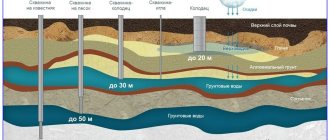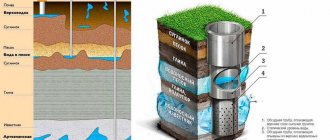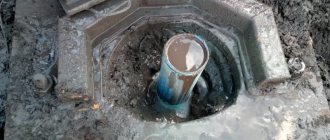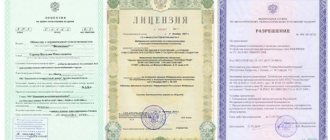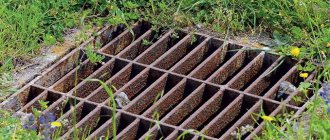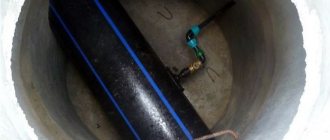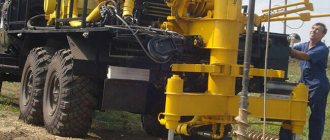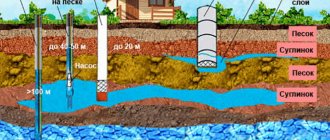Many happy owners of land, having registered ownership, consider all their responsibilities for registering the property to be completed. But it is not so. The law requires that an equipped water well be documented. Aquifers (horizons) are classified as minerals, and their extraction is regulated by the Law “On Subsoil”. In order to avoid problems and not pay significant fines, you need to know exactly what depth of the well is subject to mandatory licensing and what is not.
New rules
In 2021, special attention is paid to summer cottages. They were officially abolished. Now, instead of dacha plots, gardening and gardening plots are allocated. The state also pays great attention to control over the use of subsoil, in particular water use.
In 2021, a tax on water from underground sources was introduced, which all owners of gardening and vegetable plots are now required to pay, even if they do not belong to SNT or other partnerships . This is true for all plot owners whose wells meet certain standards.
Therefore, many summer residents are concerned that they will have to pay for their well or well on the site. However, not all owners will be charged a fee.
Where to apply for permission?
The direct body issuing subsoil licenses is the Department of Subsoil Use (territorial division of the Federal Agency for Subsoil Use).
Determining the legality of the construction and use of borehole sources falls within the competence of two departments. On the one hand, this is environmental law, the requirements of which are reflected in the Federal Law “On the Sanitary and Epidemiological Welfare of the Population.” On the other hand, groundwater, in accordance with the Federal Law “On Subsoil”, is classified as mineral resources and for its legal extraction it is necessary to obtain the appropriate permission in the form of a license for the use of subsoil from the Subsoil Manager at the Federal or Regional level.
The function of issuing licenses for the use of subsoil at the Regional level was fixed on January 1, 2015, with the entry into force of amendments to the Federal Law “On Subsoil”. In practice, this means that if the maximum daily volume of water consumption of your organization is more than 500 cubic meters, then to obtain a license you must contact the territorial office of the Department of Subsoil Use of the Federal District within which your organization is located.
In relation to St. Petersburg and the Leningrad region, this is Sevzapnedra. In all other cases, permitting documentation is obtained at the Regional level, from the executive authority responsible for regulating issues of subsoil use and environmental management of the corresponding region. In St. Petersburg and the Leningrad region, this is the Committee for Natural Resources Management.
Current legislation 2021
Issues of licensing wells, obtaining permission to build wells and carry out water production are regulated by the following legislative acts:
- Law “On Subsoil” No. 27-FZ of 1995, as amended in 2021.
- Resolution of the Supreme Court of the Russian Federation “Regulations on the procedure for licensing the use of subsoil” No. 3314-1 of 1992, as amended in 2021.
- Instructions for the use of subsoil of the Geology Committee dated 1994 No. 583.
Responsibility for non-compliance with legislation in the field of water use is determined. A system of fines is provided for violations (Article 7.3 of the Administrative Code).
Penalty for not having a water well license
Finally, it is worth mentioning the punishment for drilling a water well on a private plot without the appropriate permission. In this case, you will face administrative punishment in the form of a fine in the amount of 3 to 5 thousand rubles (if you are a civilian). For officials, an amount of 30-50 thousand rubles is provided.
In addition, you can be punished for violating the terms of the issued license or failing to comply with the requirements of the developed subsoil use project: a fine of 2000-3000 rubles.
This concludes our consideration of the process of obtaining a license for a water well, as well as the features of its use. Good luck!
Who doesn't need registration?
All users extracting water from the subsoil are divided into 3 categories:
- Legal entities that conduct economic or entrepreneurial activities. Water is used for drinking and technical purposes.
- Horticultural and gardening partnerships not engaged in commercial activities. Societies withdraw water within established limits.
- Individuals extracting water within the established standards for their own needs.
In case of violation of the law, appropriate fines are provided for each category of users. The following wells and wells do not require registration:
- Water is withdrawn from strata that are not subject to registration. These are shallow wells on sand that cannot be called artesian.
- Extraction is not carried out from central water supply systems of local or urban significance.
- No more than 100 cubic meters of water from the subsoil per day are consumed.
- Water intake is carried out only for own needs, is not sold, and is not used for business activities.
If an unregistered well or well does not meet the listed parameters, the owner pays a fine. You will also need to obtain a license. If the user ignores the instructions of the regulatory authorities, the well is plugged, stopping water intake at the expense of the owner.
Registration of a well in Rosreestr
All legal entities are required to register a well before using it, as it is considered real estate
. Wells are registered by the Federal Cadastral Chamber. In order to register a water intake structure, the owner of the site must submit:
- application for registration;
- a document confirming ownership of the land plot on which the well is located;
- technical plan or passport of the water intake structure project;
- a copy of the license for the right to use groundwater;
- act and protocol issued by the operational commission;
The entire package of documents can be submitted in person, sent by letter with declared value via Russian Post, or via the Internet with an electronic signature. No later than 7 working days, Rosreestr is obliged to consider
application for state registration of a real estate property (well).
The well will be entered into the register of real estate objects and will be assigned a cadastral number. In addition, the water intake structure will be marked on the all-Russian cadastral map.
Well or well?
To answer our reader’s question about what is better to build, a well or a borehole, it is worth considering some of the features of these objects:
- Well, shallow well . Minimal construction costs required. This is a universal water intake point that can be used even during power outages. The service life is more than 50 years. But the quality of water in the well is much worse, since nearby industries and agriculture pollute surface waters. The performance of such an object is low. The maximum flow rate of water from the well is 250 l/hour. This is not enough for watering and operating the pool.
- Artesian well . The water from this water intake point is clean and of high quality. It contains no toxins or carcinogens that can enter the upper groundwater. The flow is always stable. Artesian wells are suitable for drinking purposes. Water obtained in this way is often used for industrial purposes. The disadvantage is the high cost of creation. Artesian wells must be licensed.
Therefore, site owners weigh all the pros and cons of each option. There is no single correct solution.
Useful tips
If you have decided to extract water on your site, consider the fact that obtaining a license is not only a rather painstaking and specific process, but also quite expensive. Therefore, it is important to choose a reliable and experienced person to carry it out.
Take on board a few practical tips regarding hiring specialists that will help you speed up and simplify the process of obtaining a water well license as much as possible:
- The best option is to search not for a company, but for an individual hydrogeologist who will perform the necessary work efficiently. In fact, in any company, the work of obtaining a license is controlled by one, maximum two people. All the rest are assistants, accounting, etc. - they represent a kind of “ballast” for you on which you will spend your money. Another question: how to choose a truly professional in the field of studying underground subsoil? Firstly, the person you choose, of course, must be a certified specialist (it’s also a good idea to check if you have a diploma). Ideally, if a person has a Ph.D. It will be great if the specialist you choose has published works in the field of studying groundwater, etc.
- You should not communicate with company managers, since they do not have the necessary knowledge in matters of hydrogeology and, among other things, they underestimate the deadlines for completing work, while at the same time inflating their price.
- It is not advisable to contact companies that have the prefix “Eco” in their name. The fact is that such companies are most often just intermediaries who request considerable sums and do not have an appropriate specialist. And therefore, they simply resell your “business” to other companies.
Well drilling
- You should not “follow the lead” of government officials who recommend any companies to you. First of all, you won't get any benefit from it. Secondly, with a high degree of probability, you will spend too much money by contacting these companies.
A few words should be said about the timing of obtaining a license. The process of reviewing an application for a license is quite lengthy. Usually it is about 2 months. It will take almost the same amount of time to obtain each license (total, plus another 4 months). And don’t forget about the examinations (a project for studying the subsoil and quantifying water reserves): each lasts about 1.5 months. In fact, it will take you about 1 year to obtain all the permits necessary to extract water from the site.
Preparing for licensing
If the owners nevertheless decide to drill an artesian well, a number of preparatory work should be carried out even before licensing. Drilling work must be carried out by a specialized organization. Specialists must have a license to carry out such work. This is regulated by the Law “On Subsoil”. The organization will not agree to carry out drilling operations until permitting documents are issued.
You need to contact the Ministry of Natural Resources. First you need to obtain several permissions:
- The relevant organization makes calculations of water consumption.
- The well design is coordinated with the district water resources department.
- Obtaining a territory plan from Rospotrebnadzor.
In order for drilling to be approved, there must be no buildings or structures on the site at a distance of 60x60 m. Sources of possible pollution should be located at a distance of at least 300 m. There should be no toxic substances in the soil. The characteristics of the soil need to be known before drilling, having received the appropriate conclusion.
Features of registration for legal entities
A distinctive feature of water supply to enterprises and organizations is the need to build workings with a high flow rate, which is achieved in an artesian well. With its help, the second level of underground water deposits is reached. Owners of such water intake need to register as subsoil users.
For a legal entity, there are 3 options for obtaining a license:
- The well is operational, but without registration. In this case, they receive a document that allows geological exploration and water use at the same time: the paper is called a combined license.
- Extraction for water intake is planned in an area with a studied hydrogeological situation and calculated water resources. Prospecting and geological exploration work has already been completed. Only a mining license is issued for the site.
- A well is laid in an undeveloped area in the absence of information about the structure of rocks and hydrological conditions. Registration of the right of use consists of obtaining two licenses: for geological study of subsoil, and for the extraction of groundwater.
Licensing can be carried out at the well drilling stage.
For legal entities, the construction or operation of water intake structures without permits will result in fines. It will take time to legalize an artesian well: about a year if you start from scratch, 3 months if you concentrate on water production.
Obtaining a license
Having agreed on a well drilling project, you need to contact the Ministry of Natural Resources (MNR). It is necessary to supplement the package of documents with confirmation of ownership of the site.
After drilling the well column, a passport of the characteristics of the water intake point is drawn up. The well is put into operation after inspection by the commission. Representatives of local regulatory authorities draw up a protocol, an inspection report. Based on the conclusion, the object is entered into the state register.
In 2021, owners of plots in SNT can license a well on preferential terms. If the procedure is carried out before 2021, you will not need to pay a state fee.
Otherwise, the owner of the artesian well must pay the appropriate fee.
How to obtain a water use permit
Information on the procedure and timing for obtaining a document permitting the use of subsoil is contained in the Administrative Regulations approved by order of the Ministry of Natural Resources in September 2009. For an existing facility, a paper is issued on the right to assess water resources for 3-5 years.
A mining license for a period of up to 25 years is obtained after calculating reserves and drawing up a protocol by the relevant commission. The results of hydrogeological surveys, as well as the characteristics of water, are entered into the technical passport of the artesian well.
All objects for which licenses have been issued are included in the state register and are used for the following purposes:
- watering home gardens and berry and vegetable crops grown in dacha cooperatives;
- technological and domestic water supply to enterprises and organizations;
- drinking water supply to the population from artesian wells.
The procedure for obtaining a license for water intake.
The licensing procedure involves multi-stage work from drawing up a project for a geological study of the territory to preparing reporting documents on water reserves based on field research. All these materials will be required when concluding a subsoil use license agreement.
Licensing of an existing well
Sometimes site owners create a well, but do not legalize it. It is advisable to enter the object into the state register without paying state duty by 2021. This is a complex procedure, but it is necessary for further water use.
You need to contact your local Ministry of Natural Resources with an application. A package of documents is submitted:
- Ownership of the plot.
- General plan of the allotment.
- The decision on sanitary well-being taken by Rospotrebnadzor.
The difficulty is that the well must comply with all legal norms. If this cannot be achieved, the object cannot be used. If the well does not harm the environment, a decision is made to legalize it.
What is important for private land owners to know?
When an owner is faced with the problem of lack of water at their summer cottage, the problem can be solved in two ways:
- connect to the main water supply (if available);
- drill your own well or dig a well.
In the first case, there will be no problems - even if the water in the main water supply is from a well, the garden society must monitor its registration
. The only thing the owner of the site needs to do is talk with the head of the partnership and agree on connecting to the main water supply. The cost of connecting to the main water supply depends on the region (more expensive in the Moscow region, cheaper in the regions), as well as on the need to lay pipes and install additional equipment.
If the garden society or partnership does not have a common water supply
, then the owner of the site has no choice but to drill his own well. And here many questions arise: registration, license, taxes and others.
All information about registration and obtaining a license can be found in the department of the Federal Cadastral Chamber in the region of residence or on the official website.
The main thing here is that the owner of the site does not need to obtain a license to use subsoil only if certain conditions are met:
- the well must be of small diameter;
- water comes from the first aquifer of the earth;
- the volume of water consumed is no more than 100 cubic meters per day;
- water is used exclusively for personal needs.
In addition, the legislator introduced one significant restriction: citizens do not have the right to drill and equip an artesian well
. This right is reserved only for organizations and gardening societies.
The drilling depth is set locally and depends on climatic conditions and the intended location of the well. The maximum depth of a well according to Article 19 of the Law “On Subsoil” cannot exceed 5 meters or the depth established in the region
. The legislator made such a reservation, since the main condition is that the source of the centralized water supply be located lower than the depth of a personal well.
That is, if the area has dry soil and the source of the central water supply is located at a depth of 10 meters, then the depth of the well can reach up to 9 meters.
Consequently, in order to use a well that meets the requirements of Article 19 of the Law “On Subsoil”, a person must only register ownership of the site.
On it, he can safely, without additional registration or obtaining a license, drill himself a well or make a well, the depth of which does not exceed the established regional limit.
If the owner of the land decides to equip a personal well (and it doesn’t matter for what reason), then he should contact the cadastral chamber and clarify all the standards
, which are installed at the place of residence.
Water consumption tax
When deciding whether to build a well or drill an artesian well, one more point is taken into account. From 2021, all owners of registered water intake points pay tax. The amount of the fee depends on the amount of water consumed.
A package of documents is provided to the tax office:
- Passport of a commissioned well.
- Tax return.
- Drilling license.
- Conclusion on the sanitary well-being of the site.
- Water level monitoring log.
For individuals, the rate is 81 rubles per 1 thousand m³ of water. For legal entities, the fee depends on the region. In 2021 it was 350-750 rubles. 1 thousand m³ of water. Taxpayers are required to make payments by the 20th day of the last month of the quarter. There is a penalty for late payments.
The new law obliges all users of registered wells to pay. This does not affect whether the owner is a member of SNT.
Control is carried out by the relevant authorities. When a debt arises, the SNT administration has the right to file a lawsuit to recover funds. The corresponding amount is forcibly withdrawn from the debtor. This is true even if the user of the well is a citizen who is not a member of the SNT. The administration of the partnership may win the case against it in court.
What documents are required for registration
The procedure for providing papers is the same for individuals and companies. In both cases, an application for the use of subsoil is drawn up, which is sent to the district resource management department. There are differences in the transfer of individual securities. To obtain a license you need:
- Charter package for a legal entity: agreement on the establishment of a company, certificates of registration with the tax office, State Statistics Committee, certificate of the Unified State Register of Legal Entities, bank details of the company and charter. A decision on the appointment of the head of the company is presented. Passport and TIN - for individuals.
- Papers certifying land ownership: general plan indicating well M1:500 or 1:1000, 1:2000, overview map of the territory M1:10000, cadastral plan, extract from the state real estate register EGRN or lease agreement, donation of land. Represented by companies and individuals.
- Calculation of the balance of water intake and drainage, contract agreements for drilling a well, calculation of reserves. Enterprises need to submit an accounting report with a note from the tax office confirming the acceptance of the balance sheet, and an order appointing the person responsible for the construction of the water intake unit.
- Technical documents: site inspection report, initial search and exploration license, projects for hydrogeological work and SSO, water quality monitoring program, reserve confirmation report.
All submitted copies of documents are certified by a notary. For existing wells, you will additionally need to submit papers confirming wastewater disposal.
Benefits of the new legislation
Although some summer residents are not happy with such innovations, the 2021 legislation provides a number of advantages:
- The problem with well users who do not want to join SNT, ONT, but use a common well, has been resolved. They will pay the same as everyone else for the maintenance of the water intake facility.
- Local governments can control the income and expenses of partnerships. Contributions are made only in non-cash form. Payments can be targeted and membership-based. Financial issues of SNT have become more transparent, and participants can receive financial documentation.
It is much easier today to obtain a license for a well. Therefore, it is worth taking advantage of this opportunity and using natural resources legally. It has become easier to legalize a well for SNT. If the water is not used for commercial purposes (only for consumption), you can go through a simplified registration procedure for the partnership:
- Geological exploration work is not carried out;
- no state expertise is required to study mineral deposits;
- no analysis of the area where the well will be drilled is carried out;
- design and technical documentation does not require approval;
- there is no need to confirm that the staff has special equipment, employees, or sufficient funding.
Therefore, if you decide to drill an artesian well, legalize it by the end of this year. This will avoid many problems in the future.
Subscribe to our Telegram channelExclusive posts every week
Stages of registration
Stage 4 of obtaining a mining license: acquiring the right to study the hydrogeology of the subsoil, writing a project for the search and exploration of water layers, a report on the results of reserve assessment, issuing a permit based on a package of submitted papers. Registration begins with confirmation of the territory belonging to the applicant for a license.
Further stages of promotion:
- coordination of the amount of water consumption in the Federal branch. water agencies;
- an appeal to Rospotrebnadzor to confirm the legality of using the site for the development of a protective zone for the first zone of the well measuring 60x60 m;
- obtaining permission to design a water intake in accordance with Order of the Ministry of Natural Resources No. 463 and Government Decree No. 118 of October and March 2010;
- development of technical specifications for mining excavation and coordination of its provisions in the subsoil use department;
- drawing up a project for the construction of an artesian well by specialists from a specialized organization;
- drilling a water intake shaft and performing a set of works to prepare a hydrogeological report on the operational characteristics of the facility, the quantity and composition of artesian waters;
- Obtaining a license for a well <100 m³/day is carried out without passing the state examination of reserves, otherwise the number of stages increases.
Starting the well.
The final point is the commissioning of the water source with the participation of representatives of government agencies. If the decision is positive, the well is assigned a code and an entry is made in the state register.
Procedure and deadlines for receiving the document
Licensing of water use begins with the preparation of papers, without which the application will not be accepted for consideration. First, the required volume of water consumption and the possibility of its disposal are comprehended: the final figure will show the consumption that will not cause damage to the environment by unauthorized discharges of liquid waste. The presented list of the procedure and deadlines for obtaining a document for the use of subsoil is not a dogma; changes can occur in any direction. For wells with a flow rate of more than 100 m³/day, the following is required:
- Registration of a license for the purpose of hydrogeological research on earth. The application is considered and the certificate is issued by the territorial departments of Rosnedra within the period established by the regulations: 65 days from the date of registration of the application.
- Coordination of technical specifications and design of geological exploration work (GRR) - 3.5 months, examination of the finished document - another 2.5. Total for the project is six months.
- Drawing up a report on survey results, examination of reserves - 90 days. If a disagreement arises, the time is extended by 60 days.
- License for production rights - its registration may take 2-4 months.
The list does not include the period of development and approval of sanitary protection zones: this is carried out simultaneously with the recorded procedures. The total time spent on licensing is one and a half years, and weekends and holidays are not taken into account. If the well flow does not exceed 100 m³/day, 220 days will be required due to the exclusion of time for surveys on the geology of the subsoil.
Sanitary protection zone project: requirements for the sanitary protection zone
Another project concerns the mandatory sanitary safety requirement to provide a sanitary protection zone (SPZ) near a water source. Before obtaining a license for a well, you will need to create a fenced sanitary zone near the water source (well), the radius of which is from 30 to 50 meters. In some cases, this figure may be reduced, but not by more than 10 meters. Access beyond the fence should be limited to everyone except the owner of the site and workers servicing the water well equipment.
But the fenced area should not contain any objects not related to the functioning of the well, including trees, poles, and bushes. You should also not forget about regular cutting (mowing) of the grass in the ZSO. Paths to the well and related equipment must have a hard surface, for example, concrete, asphalt, etc.
You need to obtain a certificate confirming the existence of conditions for organizing a public protection organization at the local branch of Rospotrebnadzor.
Issuance of a license, validity period
From all of the above, it becomes clear that creating the necessary conditions and drawing up a package of documents for licensing a well is a rather difficult process. The documentation is reviewed within up to two months, after which a decision is made to issue a license for the right to use subsoil, which is more simply called a “well license,” or an official refusal of the license is transmitted.
Having received this document in hand, you can begin the actual construction of the well. It is worth noting that drilling artesian wells also requires a license - the organization carrying out such activities must have it.
Important! A license for a private well has a validity period of 25 years, after which you will need to go through the entire procedure again.
